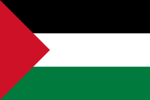Inter-Ba'athist conflict
| Inter-Ba'athist conflict | |||||
|---|---|---|---|---|---|
| |||||
| Belligerents | |||||
|
Supported by: |
Supported by: | ||||
| Commanders and leaders | |||||
|
|
| ||||
| Part of a series on |
| Ba'athism |
|---|
 |
The Inter-Ba'athist conflict refers to the conflict between the Syrian-led Ba'ath Party and its subgroups, and the Iraqi-led Ba'ath Party and its subgroups.
History[edit]
The conflict emerged after the Ba'ath Party split into two factions, that of Syria and that of Iraq, following the 1966 Syrian coup d'état where Michel Aflaq and Salah al-Din al-Bitar were overthrown by Hafez al-Assad and Salah Jadid. In the 1970s, the two Ba'athist parties managed to reconcile, although the conflict erupted again as a result of the 1979 Ba'ath Party Purge in Iraq.[1][2]
In 1980, when Saddam Hussein invaded Iran, leading to the Iran-Iraq war, the Syrian Ba'ath chose to ally with Iran, beginning a Syrian Baathist alliance with Shia Islamists, and an Iraqi Baathist alliance with the West and Sunni Islamists. Despite the Baath Party as a whole claiming to be secular, the conflict is partially rooted in sectarianism as the Iraqi Baath party was led by Sunnis, while the Syrian Baath party was led by Alawites.[3] The Iraqi Baath Party supported the Muslim Brotherhood in their revolt against the Syrian Baath.[4]
References[edit]
- ^ Batatu, Hanna (1999). Syria's Peasantry, the Descendants of Its Lesser Rural Notables, and Their Politics. Chichester, West Sussex, UK: Princeton University Press. ISBN 0-691-00254-1.
- ^ Ehteshami, A. Hinnebusch, Anoushiravan, Raymond (2002). Syria and Iran: Middle Powers in a Penetrated Regional System. New York, USA. ISBN 0-415-15675-0.
{{cite book}}:|work=ignored (help)CS1 maint: location missing publisher (link) CS1 maint: multiple names: authors list (link) - ^ Nasr, Vali, The Shia Revival (Norton), 2006), p.154
- ^ "The Syrian Muslim Brotherhood". Cablegate. 26 February 1985. Archived from the original on 8 May 2014. Retrieved 12 July 2013.
